Turning a House Into a Home
Is your district a branded house or a house of brands? Find out how to manage each structure.
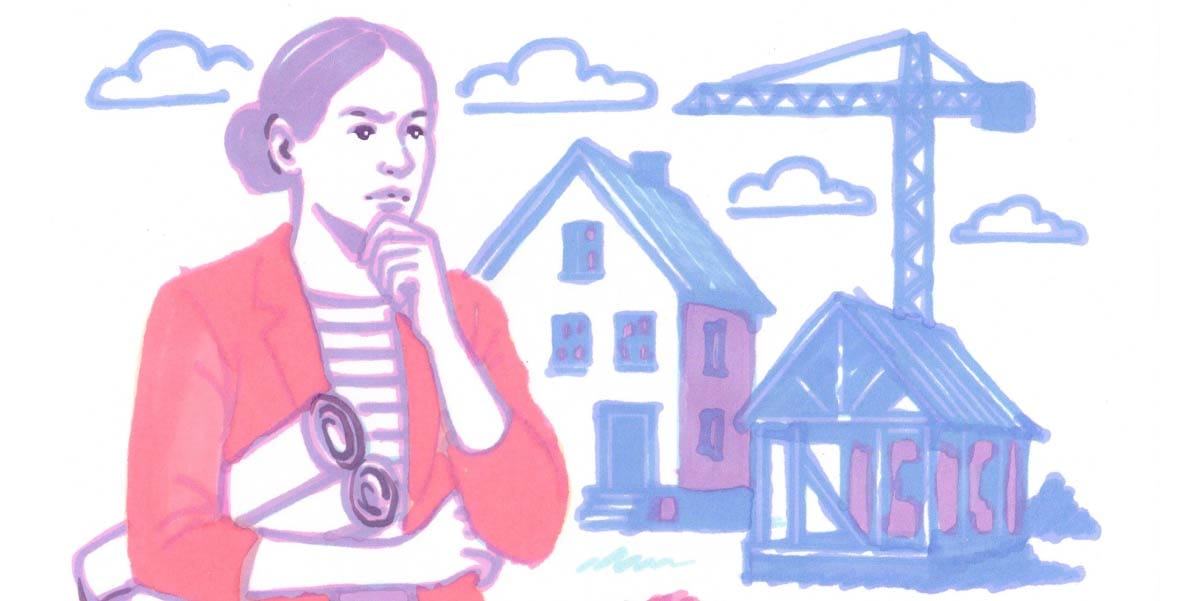
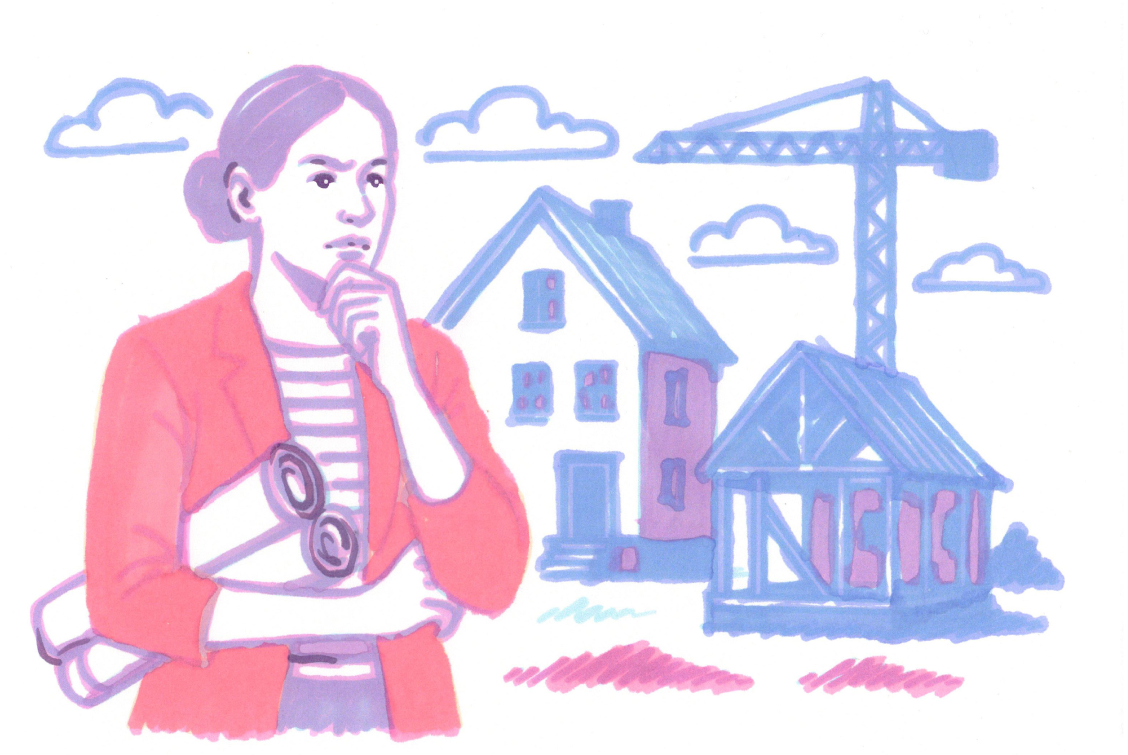
Turning a House
Into a Home
Is your district a branded house or house of brands, and why should you care?
Imagine if an architect showed up to a job site, turned to her team, said, “Let’s build a house!” and then walked off. One worker might start clearing the land to build a mansion while another might lay the foundation for a modest starter home. Even if everyone had the best intentions, without clear direction, chaos could ensue. The same is true in school marketing. When it comes to building a strong, well-aligned brand for your district, it’s up to you—the architect—to provide clear direction.
In the marketing world, conversations about brand consistency and alignment center around the concept of brand architecture. Put simply, brand architecture is the structure of an organization’s brand(s). In the course of this article, we’ll discuss two different structures: “house of brands” and “branded house.” While there are benefits and drawbacks to both, our goal isn’t to convince you that one is better than the other. In fact, the choice may not be entirely yours to make.
Your district’s brand structure will likely depend on your unique circumstances and demographics. You probably also inherited a preexisting brand structure when you took the helm of your district—and while you may wish it were different, it might be easier to do some renovations than to rip your brand down to its studs.
Instead of convincing you to choose one structure over the other, we’d rather offer examples for how to best manage and utilize what’s already available to you. Think back to that architect. Before she drew up her plans, she likely went to the job site to get the lay of the land so that she’d know what her team was working with. You may not be able to change the lay of the land in your district, but it’s up to you to make sure you have all the knowledge necessary to make the best possible decisions.
So let’s take a look at two different districts—one that falls into the branded house category and one that would be considered a house of brands. We’ll talk through the downsides and benefits of each, as well as share ideas for how to make the most of what you’ve got.

Denton ISD: House of Brands
Denton ISD in Texas has 45 campuses, and each school has its own unique branding. When we asked Chief Communications Officer Julie Zwahr why, she said, “Because the genie’s out of the bottle.” She admits that if she could start from scratch today, she’d pick one mascot for everyone, just for simplicity’s sake. “But we’re 140 years old,” she says. “There are people in our community who would be offended if we did away with the Vikings because they grew up as a Viking. Their dad was a Viking. Their grandma was a Viking. They want their kid to be a Viking.”
“I’ll point to another example,” Zwahr says. “Denton High School, our flagship high school, is also 140 years old, and they’ve always been the Broncos. We have a yearbook from 1905 where someone drew the Bronco by hand.” While it’s key to pay homage to tradition, it’s also crucial to maintain a consistent brand—no small task considering how many distinct brands fall under Denton ISD’s umbrella.
The Main Drawback: Volume
The sheer amount of branding inherent to the house of brands structure is enough to give any school communicator pause. It’s simply a numbers game: The more brands you have to maintain, the more likely one of those brands will fall out of alignment. And while Denton ISD’s school brands are rooted in a wonderfully rich sense of tradition, a longer history sometimes means more time for a brand to go off the rails. “We inherited some logos that were student-created and some that were definitely not trademarkable,” Zwahr tells us. “Some of them were straight rip-offs of professional sports teams and Disney characters.”
About 10 years ago, Denton ISD started to get serious about solidifying each school’s brand while also looking for ways to strengthen the district’s. “We have a reputation for high-quality athletics and fine arts,” Zwahr says. “We’re on the national stage. There’s not an NFL draft where we don’t have two or three alumni drafted in the first five rounds.” And while that’s a great opportunity to strengthen the district’s reputation, it’s also the kind of spotlight that could highlight branding missteps. “If your all-state linebacker gets drafted by the Minnesota Vikings and one of your schools has ripped off the Vikings logo—that’s not going to go over well,” Zwahr says.
So Denton ISD has to take as much care with every single school brand in their system as they do with the district brand. “Branding is completely different for us than it is for McDonald’s or Chick-fil-A,” says Zwahr. “They’re one brand with multiple locations. We have to pay fidelity to individual campuses and the overarching organization.”

So how do they do it?
One of Denton ISD’s key strategies for maintaining brand consistency across the district is their in-house print shop. “Schools produce so many printed materials,” Zwahr says. So 10 years ago, the district implemented in-house graphic design and printing services. Now, they have their own printing equipment, two full-time graphic designers, and two employees who run mail routes and deliver printed materials throughout the district. “We wanted to be independently sustainable,” Zwahr says. “Our team can design and deliver at a fraction of the cost of a high-volume printing company.”
What’s more, Denton ISD staff can easily request help with making everything from event brochures to graduation programs—allowing the communications team to protect and maintain the district’s many brands. “We can make sure that you’re using the right hex color, the right Pantone color, the right logo. Somebody has to do those final checks,” Zwahr says. And wouldn’t it be better if that person were a professional designer?
Denton ISD has also implemented logo use agreements to maintain the fidelity of each brand. “With the exception of a handful of elementary schools that we’re still working on, all our logos are now trademarked,” Zwahr tells us. In other words, vendors must pay a small fee in order to use any of the district’s logos. But the point was never to make money; the district offers a discount for local businesses and has made the use of their logos free to organizations like the PTA. “It’s really just to keep people honest about when and how they’re using our assets,” Zwahr tells us—honest and on brand.
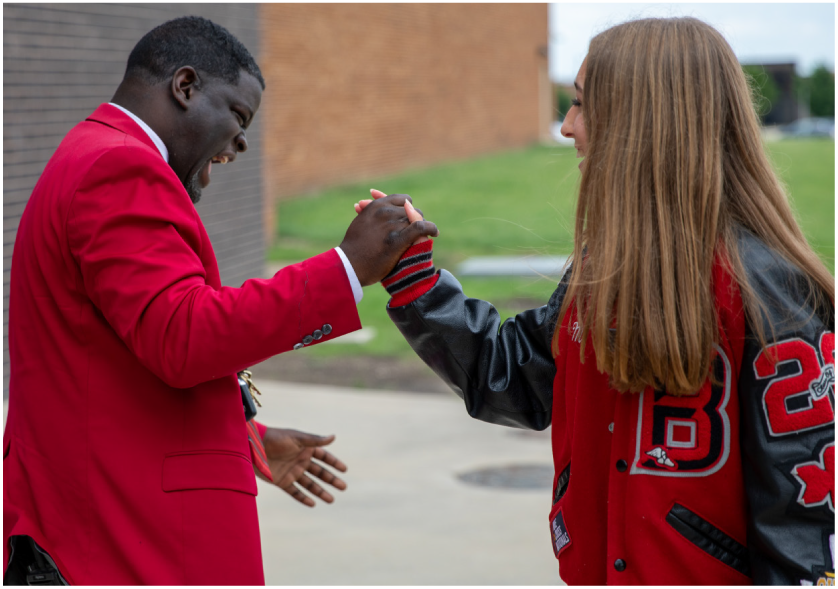
The Main Benefit: Connection
Because the house of brands structure encourages an increased sense of school pride, it creates more opportunities for your community to connect with your district. Put simply: The more outlets you have, the more chances there are to plug in.
“There’s an opportunity with branding that people just don’t realize,” Zwahr says. “Especially when it comes to public schools, people take a lot of pride and sense of ownership in the school that their own child attends or that they attended.” So it’s important that each school maintains its singular identity. What’s more, Denton ISD operates within 18 different municipalities, so it could be confusing if every school was forced to be “Denton first.”
At the same time, though, Zwahr tells us that Denton ISD has a reputation in the broader Dallas-Fort Worth metroplex for excelling in sports and fine arts—so it’s equally important for the district to maintain its own identity as well. The house of brands structure is really about taking the “yes, and…” approach. Yes, Denton ISD encourages school pride, and it encourages district pride. “At the end of the day,” Zwahr says, “it’s all about creating connection.”
Burrillville School Department: Branded House
According to Dr. Michael Sollitto, superintendent of Burrillville School Department in Rhode Island, “Bronco” and “Burrillville” are synonymous. “When you hear the word ‘Bronco’ anywhere in the state, you think of Burrillville,” Sollitto says. “My office is on Broncos Highway. There’s a little shopping center up the road called Bronco Crossing.” Burrillville School Department’s brand is a textbook example of a branded house; the entire district possesses a unified identity under the Broncos banner. But that hasn’t always been the case.
Shortly after Sollitto took the helm in 2018, he conducted a communications audit in partnership with a public relations company. One of the recommendations that came out of that audit was to streamline the district’s brand. “Our middle school was the Mustangs, and one of our elementary schools was the Colts,” he says. “Another elementary school was the Stallions, and another one was the Seahorses—which makes no sense. There are no oceans in landlocked Burrillville.”
So Sollitto made it his goal to bring the district brand under one roof—not just for the sake of simplicity, but for the sake of the district’s enrollment numbers. “We were losing students to competing career and tech ed programs in neighboring high schools,” Sollitto tells us. “We were losing students to private schools and charter schools. We needed to reinforce our brand, to showcase all the great things that are happening in our schools every day.” And with every school unified under one branded house, every achievement and positive story helped strengthen the Broncos brand. Of course, in order for Sollitto and his team to move the district into the future, they had to let go of the past.
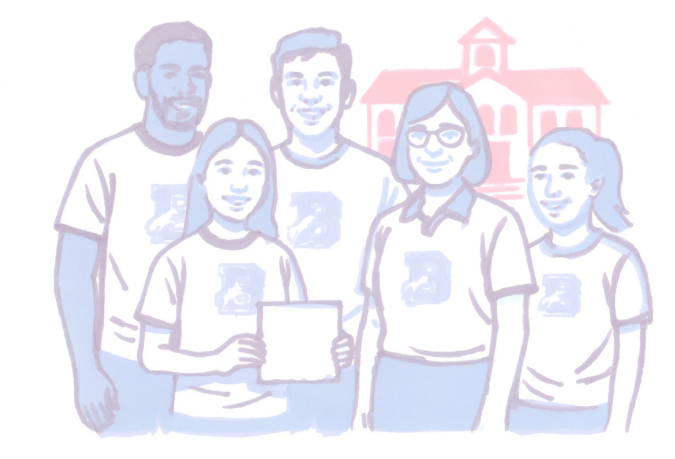
The Main Drawback: Making Small Sacrifices
Just about every soup recipe encourages you to leave your pot simmering on the stove for a while. Why? Because reducing your broth creates flavor that packs a punch. To get that strong flavor, though, you have to let some of the water in your broth boil away. The same is true about the branded house structure—minus the boiling. In order for you to create a unified identity, you have to concentrate on your parent brand—which means you have to be willing to say no to anything and everything that waters it down.
Maybe one of your elementary schools learns that 100 years ago, their mascot was a walrus—and so they ask special permission to become the Walruses. The answer is no. Maybe your middle school football team decides they want to be different from the high school football team, so they start calling themselves the Steers. Again, the answer is no.
“There was some definite pushback from folks who had been Mustangs for a long time,” Sollitto tells us. “And our football team had always used a logo on their helmets that looked like the Denver Broncos’ logo. It didn’t even match the school colors. There were some trademark questions there that I wasn’t comfortable with, so we’re not doing that anymore.”
No matter what brand structure you use—but especially with a branded house—maintaining a unified brand identity means that someone at some point won’t get what they want. That’s the hard part. In order to attain the broader goal of unity, small sacrifices must be made along the way.
So how do they do it?
In order to streamline a brand, you must get very clear—and very strict—about what is and is not on brand. In addition to removing old, off-brand assets, Burrillville standardized their colors and developed a select few approved versions of their new trademarked logo. They hosted internal presentations on branding guidelines and sent information out to staff. They also held meetings with the PTA about streamlining the gear and merchandise that the district sells. Maintaining brand consistency is crucial no matter what, but especially in the context of a branded house. Think of it like this: If everyone is doing the same choreographed dance perfectly, it’s all the more noticeable when someone is off beat.
That’s not to say, though, that there’s no flexibility within the Broncos brand; there’s still some allowance for intentional offshoots. The Unified Broncos, a team recognized by the Rhode Island Special Olympics, uses a logo similar to the district’s standard logo but in pink, the color of inclusion. There are also “vintage” Broncos logos still in circulation. Variations like this aren’t “off brand.” Rather, they’re carefully curated opportunities to be creative and generate even more pride in the district.
It should also be said that keeping everyone on brand is about more than just using the right logo. It’s about getting the community to buy in. That’s why Burrillville launched “We Are All Broncos,” a multiyear campaign meant to get everyone excited about being a Bronco. First, they had conversations with school administrators to ensure everyone understood the purpose of operating within a unified brand. Then, the district came up with a series of Broncos-focused themes. In 2023, the theme was simply “We Are All Broncos,” designed to celebrate community pride and inclusion. In 2024, the theme was “Be Kind. Be Healthy. Be a Bronco.” The idea is to build buy-in by explicitly naming the values associated with being a Bronco. That way, everyone understands the unified brand is about more than a logo—it’s about building a great community together.
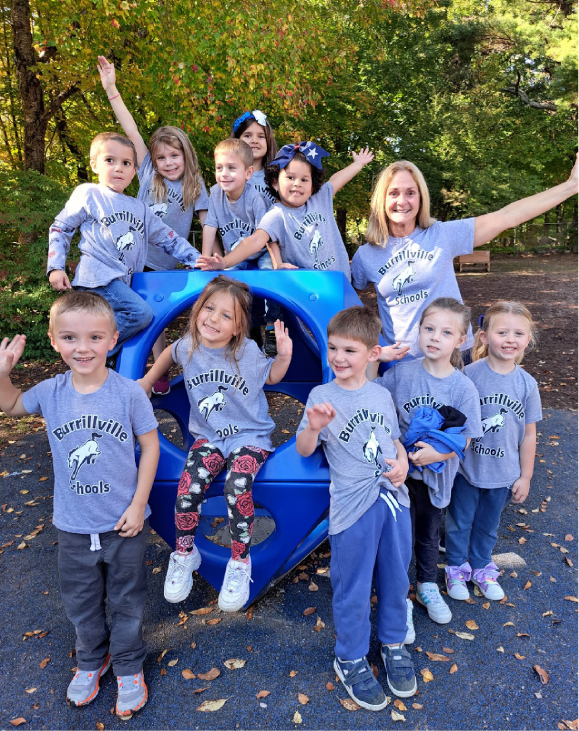
The Main Benefit: Community
Bringing the district into the same branded house not only amplifies the great work already happening in Burrillville Schools; it also encourages seamless matriculation from the kindergarten all the way to the high school. After all, if a student is going to leave the district, they’re more likely to do so when they’re already transitioning from one school to another.
“We want elementary school kids to be excited about going to the middle school, and we want our middle school kids to be excited about going to the high school. That’s part of why we focused on the message that we’re all Broncos,” Sollitto tells us.
It’s a virtuous cycle: When the district positions itself as a unified organization, the community regards the district as a unit—which further strengthens the unified identity of the district. And the result of this cycle? A sense of community. “I think this shift has been received really well,” Sollitto says, “not just by the faculty and the kids, but really by the community.”
Are those main benefits… the same?
As you read this piece, you may notice that we’re suggesting the main benefit of both structures is the same—the opportunity to connect and create community. How can that be possible?
Every house is built according to its specific environment. The landscape will be different, the resources available will be different—and the people inside will be different. But regardless of the kind of house you build, the goal is the same: to provide shelter. And regardless of the kind of brand you build, the goal is the same: to establish a positive reputation that will build community and connection. After all, what’s a house—any house—if it’s empty? It’s the people that make a house into a home—and it’s the people that make your brand into a shared identity that your entire community can be proud of.

